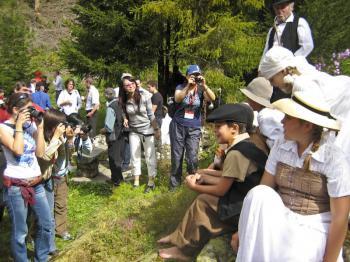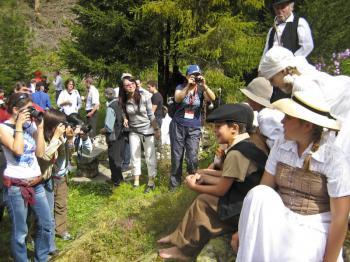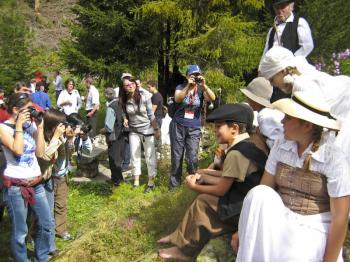“That`s amazing, oh my goodness—it`s real!” Shrill expressions of delight echoed repeatedly, in praise of Switzerland’s majestic mountain terrain. More than 130 journalists from around the globe had come to this diminutive nation, at the invitation of the Office of Swiss Tourism, to marvel over the country’s abundant natural and man-made attractions. At the historic 100-year-old Rhäti train station, participants got a simulated glimpse of the day-to-day life of those who lived during the period of the founding of the railway. Rhati is one of the world’s educational historic cultural sites.
As the special train arrives, the scene of the gathering takes on the appearance of a bustling anthill of activity. Cameras click continuously, frequently wielded by excited Asians and Americans, as well as journalists from India. It is almost as though all are involved in a friendly competition to record an aspect of uniquely Swiss culture. The unscripted scene at times, reminds one of a well-run zoo. All the actors are conscious of the parts they play, and the young Swiss organizers are equally mindful of their roles during the seven-day media extravaganza. Statements like, “I don’t know, I have never been here before, I must ask my boss...” were noticeably absent. Many experienced journalists who had participated in countless other media events on different parts of the continent were totally in the moment, caught up in the spirit of exuberant spontaneity and cooperation. The scene’s synchronous unfolding and underlying message required no translation.




